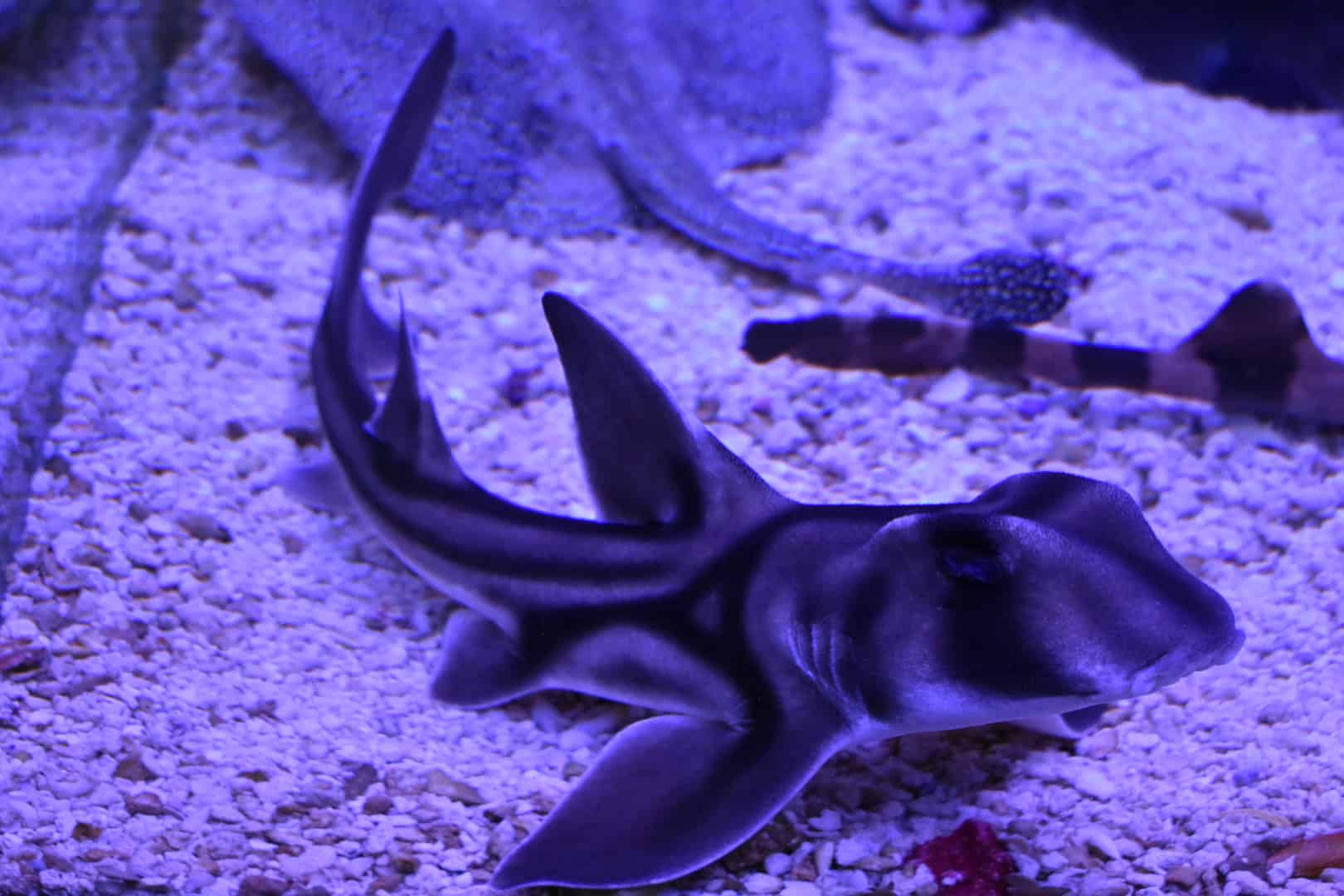Spotlight – Marine Elasmobranches
written by Tyler Baskin
photos by Tyler Baskin
When walking into an aquarium retailer one often thinks to themselves “What’s the craziest fish they have here?” In most cases, sharks and rays wouldn’t be something you’d find but here at Absolutely Fish we meet everyone’s expectations. These fish belong to the subclass Elasmobranchii which consists of all the sharks, skates, rays, and sawfish. In this article we’ll explore a few of the marine elasmobranchs we commonly stock and some of their requirements for living happily in the aquarium.
One of the more common sharks kept in the aquarium hobby is the banded cat shark, Chiloscyllium punctatum. This Indo-Pacific beauty is sold here in egg case form as well as small juveniles. Banded cat sharks can get up to 40 inches in length and are aggressive carnivores needing a meaty diet of clam strips, squid, silversides, and krill. Due to its large size, banded cat sharks should be kept in aquariums of 180 gallons and up as it grows to provide enough space to be comfortable. Some people keep these sharks in small ponds as well, versus the traditional tank. When adding tank mates, if any, you should make sure that you are adding very large fish that can hold their own against becoming the cat sharks next meal (large angels, eels, tangs, etc.). In a large enough aquarium other skates or rays are excellent choices for compatibility!
The Port Jackson shark, Heterodontus portusjacksoni, is a shark we presently have in stock and makes a great beginner shark for aquarists with large enough tanks. The Port Jackson shark hails from Southern Australia to New Zealand and can reach sizes up to 5 feet! Because of its large adult size these sharks can be housed in smaller aquariums (180 gallon) when they’re juvenile but should move up to a 1000 gallon or more final tank. Port Jackson sharks have a similar diet to others in the aquarium trade and require meaty diets of krill, clams, silversides, squid, etc. Other tank mates suitable for this species would be larger eels, lionfish, and other elasmobranchs.
As for rays in our marine lagoon we have an Atlantic Yellow Ray, Urobatis jamaicensis. This ray comes from the Atlantic, Caribbean and Gulf of Mexico regions and has a semi aggressive temperament. The ray can reach 14 inches in diameter and 20 in length. Rays should be kept in large aquariums with a footprint of at least 3 X 8 feet and around 360 or more gallons for the ray to have enough area to move around and bury in the sand. Large or medium semi aggressive tank mates can live with the ray as long as they don’t have sharp teeth (such as puffers and triggers) that may hurt the ray if nipped. Their diets consist of benthic crustaceans and mollusks and will eat some small food particles that fall to the bottom of the tank. Sand is recommended as a substrate when keeping stingrays.
These organisms all prefer to have very little to no electrical signals in the tank as they have sensitive organs that can sense them and become damaged. Sumps should have a protein skimmer, UV, and should be grounded with probes to reduce any electricity from seeping into the water. The temperatures for these fish are usually in the range of 72-80oF and should be considered when mixing with other fish. The elasmobranchs make an amazing impression on anyone visiting your aquarium and can provide a challenge for both new and experienced aquarists alike. Come visit us and be inspired by our Marine Fish Lagoon!



